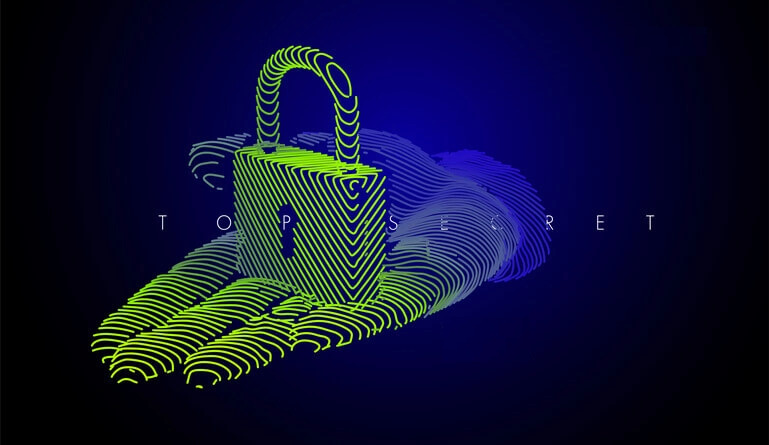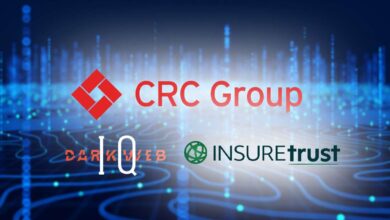2025 Cybersecurity Trends: Threats & Solutions Ahead

Stay ahead with insights into emerging cybersecurity trends and proactive strategies to mitigate evolving threats.
Nearly 1 in 3 organizations have been materially impacted by a cybersecurity attack in the last 12 months. Read to know how you can keep your organization safe and protect against new forms of attack in 2025 and beyond with the latest cybersecurity trends
8 Notable Trends in Cybersecurity for 2025
Cybersecurity in 2025 needs to be table-stakes – you need to embed it as an inherent part of your IT infrastructure to stay ahead of cybercriminals. Indeed, the evolution of cybercrime in the next few quarters will be influenced by the following trends:
1. AI-powered cyber-attacks: A new frontier in threat intelligence
As artificial intelligence (AI) advances, cyber adversaries leverage their capabilities to orchestrate more sophisticated and targeted attacks.
AI-generated phishing emails, automated malware creation, and AI-driven social engineering pose significant challenges for traditional defense mechanisms. Likewise, organizations must augment their cybersecurity posture with AI-powered threat detection and response capabilities to pre-empt evolving threats and mitigate risks effectively.
2. 5G network vulnerabilities: Safeguarding the future of connectivity
The widespread adoption of 5G networks promises unprecedented speed and connectivity but also introduces security challenges. Vulnerabilities in 5G infrastructure, including network slicing attacks and IoT device vulnerabilities, require robust security protocols and architectures.
Organizations must collaborate with industry stakeholders to develop and implement 5G security standards. It is vital that they ensure the resilience of critical infrastructure in the face of emerging threats, both for profitability and service continuity.
3. Zero-trust architecture: Redefining security in the digital age
Traditional perimeter-based security models are needed in today’s dynamic threat landscape. That’s why zero-trust architecture assumes zero trust for internal and external entities – a paradigm shift in cybersecurity. Organizations can strengthen their security posture by implementing continuous authentication, least privilege access, and micro-segmentation. This makes it possible to protect against insider threats and lateral movement by cyber adversaries.
4. Supply chain resilience: Strengthening end-to-end security
The interconnected nature of supply chains exposes organizations to cybersecurity risks from third-party vendors and service providers. Supply chain attacks typically include software compromises, highlighting the need for enhanced resilience strategies.
Organizations must urgently adopt measures like vendor risk assessments, supply chain mapping, software bill of materials (SBOM) analysis, and incident response planning. These are crucial for mitigating the impact of supply chain disruptions and cyber-attacks, even as your digital ecosystem continues to grow.
5. Biometric authentication: Balancing security and privacy
Biometric authentication methods offer enhanced security and convenience but raise privacy and data protection concerns. As these systems become more prevalent in physical locations and individual devices (for example, Touch ID on laptops), you must address the risks of biometric data theft and spoofing.
Multi-factor authentication and biometric encryption can help organizations balance security and privacy without compromising the user’s productivity.
6. IoT security challenges: Securing the Internet of Things
The proliferation of Internet of Things (IoT) devices means organizations will have new attack vectors and security challenges. If you have insecure IoT devices lacking adequate security controls and updates, you may face significant data privacy and integrity risks.
Some ways to handle this – without turning tail on your IoT implementations – are device hardening, secure communication protocols, and ongoing vulnerability management. This allows you to mitigate the risks associated with IoT-related cyber threats.
7. Blockchain security enhancements: Fortifying trust in distributed ledger technology
Blockchain technology is fast evolving beyond cryptocurrencies – therefore, securing enterprise blockchain networks against various threats is vital.
Innovations in consensus mechanisms, smart contract security, and decentralized identity solutions can help fortify trust in distributed ledger technology. Organizations must invest in certified blockchain platforms (and developer teams) to protect against fraud, data tampering, and other malicious activities in blockchain ecosystems.
8. Deepfake detection and mitigation: Safeguarding digital media
The rise of deepfake technology presents unprecedented challenges to trust and authenticity in digital media when media consumption across channels is at an all-time high.
Malicious actors can exploit deepfakes to spread misinformation, impersonate individuals, and manipulate public opinion. Industry stakeholders must develop robust deepfake detection and mitigation techniques by leveraging machine learning algorithms and digital forensics tools. This is critical to preserving trust in digital media and combating the proliferation of disinformation.
What Are the Future Threats You Need to Anticipate?
To keep up with these trends, you need to anticipate specific threats instead of only reacting to them:
1. Surprisingly sophisticated phishing attacks
Gone are the days of obvious spelling errors and generic messages; modern phishing campaigns employ advanced social engineering techniques to deceive even the most vigilant users.
These attacks are highly personalized and tailored to exploit human psychology, from spear-phishing targeting specific individuals to pretext exploiting trust relationships. This makes robust email filtering, user awareness training, and multi-factor authentication vital.
2. Advanced ransomware and Its evolution
From targeted attacks against high-value assets to automated campaigns targeting organizations of all sizes, ransomware operators constantly evolve their tactics to maximize profits. They exploit software vulnerabilities and human error to infiltrate networks, encrypt data, and increasingly demand cryptocurrency ransom payments, making it challenging for law enforcement to track and apprehend them.
Comprehensive backup and recovery strategies, regular updates and security patches, and advanced endpoint detection and response (EDR) are the only ways to mitigate the risk of ransomware attacks and minimize their impact on business operations.
3. State-sponsored cyber-warfare
The modern digital battlefield extends beyond cybercriminals; state-sponsored actors increasingly engage in cyber warfare to achieve geopolitical objectives and gain competitive advantages. These adversaries possess vast resources, sophisticated capabilities, and strategic intent, making them formidable adversaries in cyberspace.
Organizations must enhance their cyber defense capabilities, collaborate with government agencies and industry partners, and take part in threat intelligence sharing initiatives to detect and mitigate state-sponsored cyber threats effectively.
4. Adversarial attacks and their impact on AI systems
Imagine an AI-powered autonomous vehicle being manipulated by adversarial inputs, causing it to misclassify traffic signs and endangering lives. From image recognition systems to natural language processing models, AI systems are susceptible to adversarial manipulation, undermining their reliability and trustworthiness. These attacks pose significant risks across various domains, including finance, healthcare, and autonomous systems.
Exploring Proactive Strategies and Solutions: Best Practices for IT Leaders
In 2025, IT leaders need to take a proactive stance on cybersecurity. This includes:
1. Developing a cybersecurity culture throughout the organization
A cybersecurity culture is about creating awareness, promoting accountability, and empowering every employee to be a guardian of cyber resilience. IT leaders can achieve this by providing regular cybersecurity training and awareness programs tailored to different roles and responsibilities within the organization. They can also encourage a culture of open communication and collaboration, where employees feel comfortable reporting security incidents and sharing best practices.
2. Cybersecurity governance frameworks and strengthening board oversight
Boards of directors play a pivotal role in setting the strategic direction and oversight of cybersecurity initiatives within organizations. You can support this by establishing robust cybersecurity governance frameworks that define clear roles, responsibilities, and accountability for cybersecurity at the executive and board levels. Provide regular cybersecurity briefings to the board, focusing on emerging threats, compliance requirements, and the organization’s cybersecurity posture.
3. Participating in international cooperation on cybersecurity standards
Organizations can participate in international forums, working groups, and initiatives focused on cybersecurity standardization, contributing their expertise and insights. They can also align their IT practices with internationally recognized frameworks—such as ISO/IEC 27001 and the NIST Cybersecurity Framework—demonstrating their commitment to security excellence on a global scale.
In Conclusion: What About Gen AI and Cybersecurity Trends?
Any discussion of recent trends in cybersecurity will be incomplete without highlighting the role of gen AI. 52% of companies in a recent survey said that they expect generative AI to lead to “catastrophic cyber-attacks” over the next 12 months. Interestingly, 69% said they will harness the technology for cyber defense. Ultimately, modern technologies like gen AI are a double-edged sword that needs to be handled using proactive, data-driven strategies.



